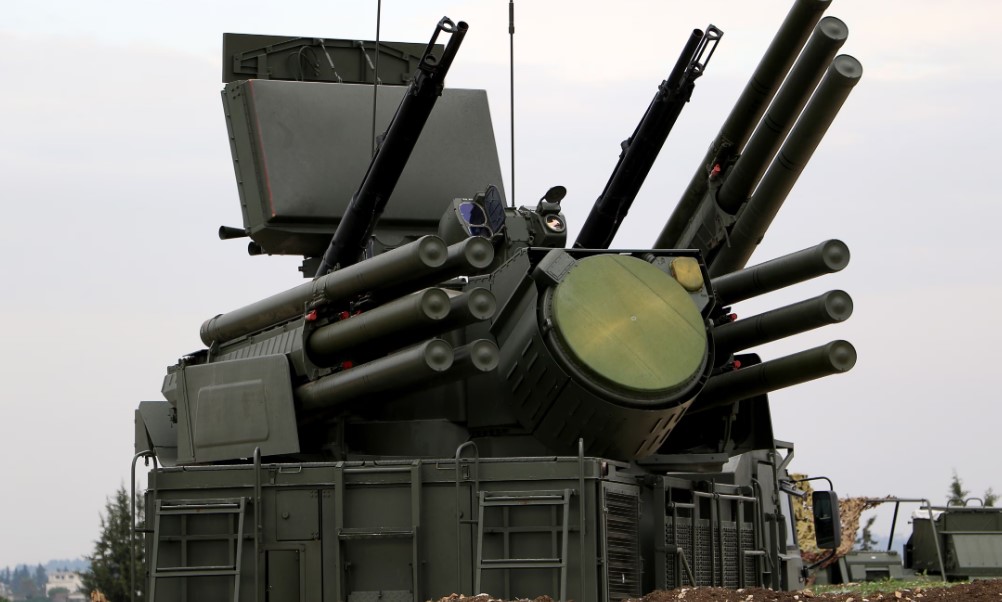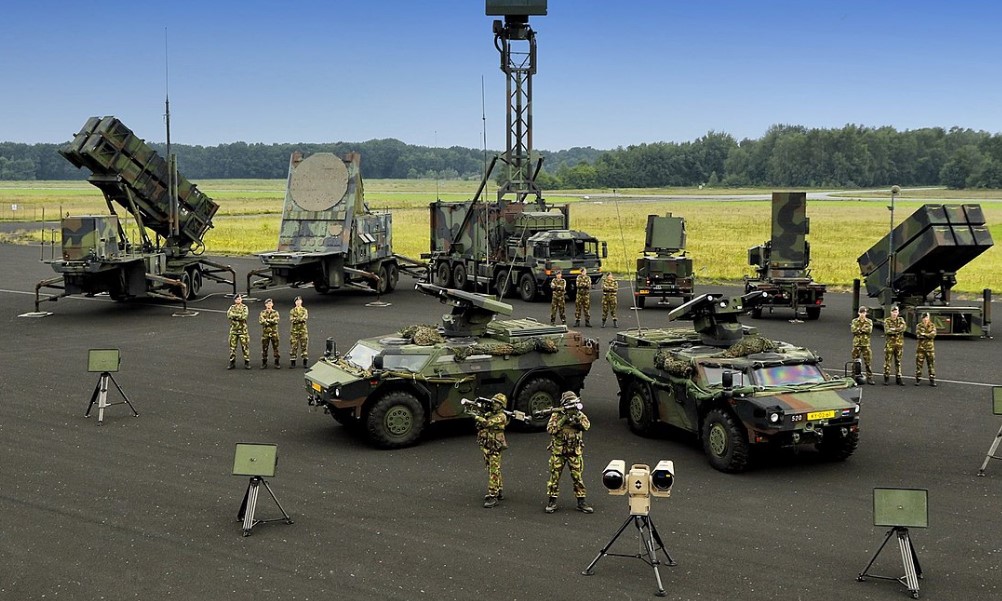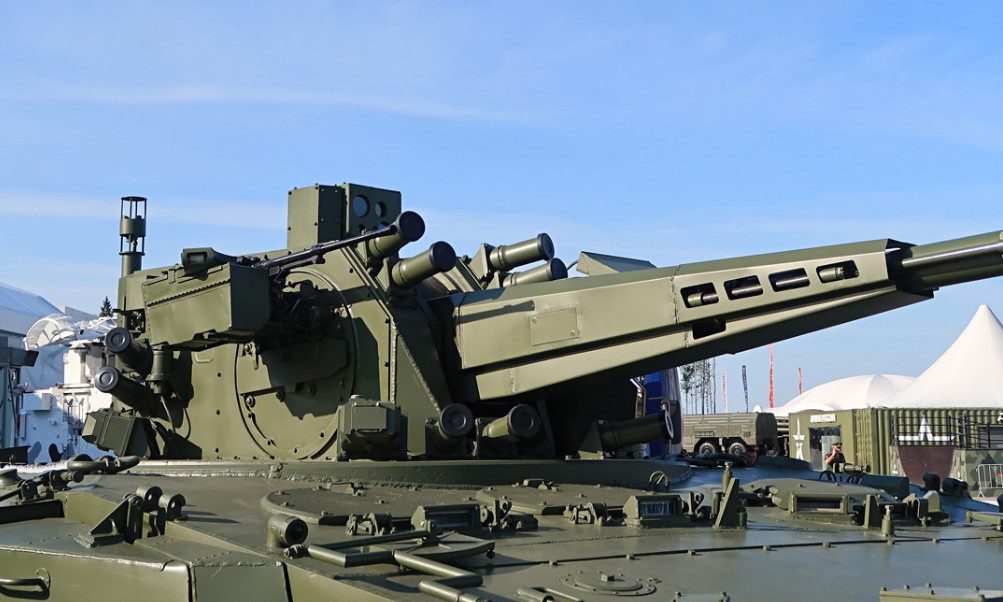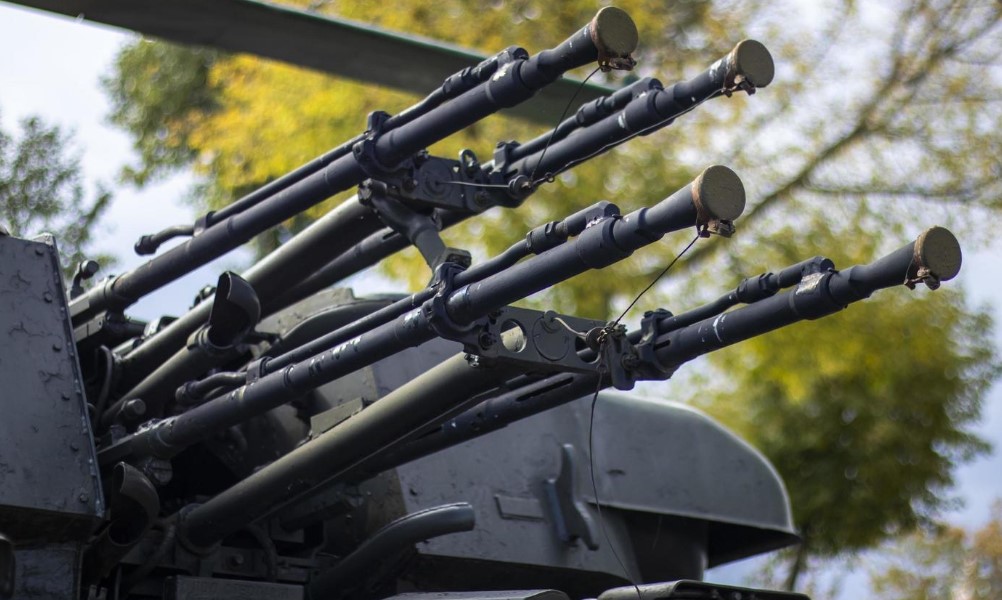Modern warfare has seen significant advancements, particularly in the domain of air defense. One area that has evolved extensively is Anti-Aircraft Artillery (AAA). Historically used during the world wars, AAA has adapted to tackle modern aerial threats like drones, helicopters, and fighter jets. This article explores the latest advancements in anti-aircraft technology, real-world examples of modern systems, and why they are critical for national defense strategies.
What is Anti-Aircraft Artillery?

Anti-aircraft artillery (AAA) refers to ground-based weapons systems specifically designed to defend against aerial threats such as drones, helicopters, and aircraft. Historically, these systems were developed to counter early aircraft during World War I and II, using large-caliber cannons to shoot down enemy planes. Over time, AAA evolved into more advanced systems incorporating rapid-fire autocannons, missiles, and smart munitions.
Modern AAA systems rely heavily on radar technology to detect, track, and engage airborne targets. The radar provides real-time data on the speed, distance, and altitude of incoming threats, feeding information to fire control systems (FCS). These FCS calculate the optimal firing solution to maximize the chances of hitting the target with precision.
AAA weapons typically include autocannons (ranging from 20 mm to 40 mm) for short- to mid-range defense, as well as missiles for engaging high-altitude or fast-moving targets. Smart munitions, such as proximity-fused shells, further enhance effectiveness by detonating near the target.
Key Features of Modern Anti-Aircraft Artillery

Modern anti-aircraft artillery (AAA) has advanced significantly, integrating cutting-edge technologies to effectively neutralize various aerial threats such as drones, helicopters, and fighter jets. Below are the key features of modern AAA systems:
1. Advanced Radar Systems
Radar systems are central to the effectiveness of AAA. Modern radars, such as phased-array radars, can detect and track multiple aerial targets in real-time. These systems provide precise data on the location, speed, and altitude of incoming threats, making them essential for accurate targeting(The Insurance Universe). Multi-spectral sensors also enhance detection across visible, infrared, and electromagnetic spectrums, improving target acquisition in all weather conditions(The Insurance Universe).
2. Fire Control Systems (FCS)
The fire control system (FCS) is the computational core of modern AAA. It processes data from the radar and other sensors to calculate the optimal firing solution, ensuring that the artillery engages targets with maximum precision. The FCS incorporates algorithms that account for target speed, trajectory, and environmental factors like wind(Orbitshub). In some cases, AI technology is integrated, enabling adaptive learning and improving targeting accuracy over time(The Insurance Universe).
3. Smart Munitions
Modern AAA systems utilize precision-guided munitions, such as proximity-fused shells, which detonate near the target for maximum effectiveness. These munitions increase hit probability and minimize collateral damage. Autocannons (20mm to 40mm) are also commonly used, offering rapid-fire capability for close-range defense, particularly against drones(Orbitshub).
4. Mobility and Deployment Flexibility
Modern systems like the Skyranger 30 and Pantsir-S1 are designed for mobility, allowing them to quickly relocate and adapt to changing battlefield conditions. Self-propelled platforms enable these systems to operate in diverse terrains, ensuring flexibility in defensive operations(CASS).
5. Integration with Broader Defense Systems
AAA systems are often integrated into layered defense networks, working alongside surface-to-air missiles (SAMs) and fighter jets to provide comprehensive air defense. This layered approach ensures that threats are engaged at multiple stages, increasing the chances of interception(CASS).
The Role of Anti-Aircraft Artillery in Modern Warfare

Anti-aircraft artillery (AAA) plays a vital role in modern warfare by providing a critical layer of defense against various aerial threats, including drones, helicopters, and jets. As warfare continues to evolve with the introduction of sophisticated technologies like drones and hypersonic missiles, the importance of AAA systems has grown significantly. The role of AAA in modern conflicts goes beyond just shooting down planes; it has become an integral part of a nation’s broader air defense strategy(The Insurance Universe)(CASS).
Protecting Critical Infrastructure
One of the primary roles of AAA in modern warfare is the defense of critical infrastructure, including military bases, airfields, power plants, and urban centers. Modern AAA systems like the NASAMS or the Skyranger 30 provide robust protection against low-altitude and high-speed threats. These systems are particularly valuable for defending high-value targets from drone attacks, which have become more common in recent conflicts(The Insurance Universe)(CASS).
Cost-Effective Defense Against Drone Swarms
In recent conflicts such as the Russian-Ukraine war, drones have been used extensively due to their low cost and ease of deployment. Traditional missile defense systems, such as the Patriot, are expensive to operate and can be overkill for neutralizing cheap drones. In contrast, modern AAA systems, particularly those equipped with autocannons and smart munitions, provide a cost-effective solution to counter such threats. Systems like the Pantsir-S1, which combines autocannons with missile systems, are designed to deal with drone swarms and low-flying aircraft(The Insurance Universe)(Orbitshub).
Flexibility in the Battlefield
AAA systems are highly versatile and can be deployed across different terrains, from urban environments to open battlefields. Mobile AAA systems, such as the Pantsir-S1 and the Skyranger 30, are designed for rapid deployment and repositioning, allowing military forces to adapt quickly to changing conditions on the battlefield. This flexibility is crucial in modern warfare, where aerial threats can emerge from any direction and at varying altitudes(The Insurance Universe)(CASS).
Integration with Broader Defense Networks
Modern AAA systems do not operate in isolation. They are typically integrated into larger air defense networks that include fighter jets, surface-to-air missile systems (SAMS), and electronic warfare capabilities. This layered defense approach ensures comprehensive coverage against a wide range of threats. AAA systems are often the first line of defense in this network, engaging low-altitude threats that SAMS might miss(The Insurance Universe)(CASS).
Real-World Examples of Modern AAA Systems

1. TRIDON Mk2
The TRIDON Mk2 is a state-of-the-art self-propelled anti-aircraft gun system developed by BAE Systems. Designed to tackle both aerial and ground targets, this system is particularly effective in urban warfare scenarios. Key features include:
- Effective Range: Up to 12 kilometers.
- Autocannon Size: 40 mm, optimized for both low- and mid-altitude threats.
- Advanced Fire Control: Equipped with cutting-edge radar and fire control systems for precision targeting.
Discover more about TRIDON Mk2
2. Rheinmetall Skyranger 30
The Skyranger 30 is an advanced mobile anti-aircraft system developed by Rheinmetall, known for its high rate of fire and mobility. The system features an autocannon capable of firing 1000 rounds per minute, making it particularly effective against drones.
- Range: 4,000 meters.
- Radar Technology: Integrated with an AESA radar that allows the system to detect, track, and engage multiple targets simultaneously.
Learn more about the Skyranger 30
3. NASAMS (National Advanced Surface-to-Air Missile System)
The NASAMS is a medium- to long-range air defense system widely used by NATO countries. This missile system provides robust defense against a wide array of aerial threats, including aircraft and cruise missiles.
- Range: Long-range, ideal for defending large airspaces.
- Integration: Can be networked with other defense systems for enhanced situational awareness.
Find out more about NASAMS
4. Pantsir-S1
The Pantsir-S1 is a Russian hybrid air defense system that combines short-range missiles and autocannons. It is highly mobile and can quickly transition between different combat scenarios, making it a versatile system for modern warfare.
- Range: Medium-range system with radar-guided missiles and guns.
- Versatility: Used to counter both missile and aircraft threats.
Learn more about Pantsir-S1
5. Phalanx CIWS
Primarily deployed on naval vessels, the Phalanx CIWS (Close-In Weapon System) is designed to protect ships from incoming missiles and aircraft. The system’s Gatling gun can fire up to 4,500 rounds per minute.
- Range: Close-in, providing last-ditch defense.
- Key Features: Autonomous targeting system that tracks and engages incoming threats automatically.
More details on Phalanx CIWS
Product Comparison Table
| Product | Range | Fire Rate | Advantages | Disadvantages | Price |
|---|---|---|---|---|---|
| TRIDON Mk2 | 12 km | Moderate | High versatility | Limited to mid-range threats | $$$ |
| Skyranger 30 | 4,000 meters | 1000 rounds/min | Excellent for drones | Less effective for high-speed jets | $$$$ |
| Pantsir-S1 | Medium | N/A | Combines guns and missiles | High maintenance costs | $$$$$ |
| Phalanx CIWS | Close-range | 4500 rounds/min | Naval use, last-ditch defense | Limited land applications | $$$$ |
| NASAMS | Long-range | N/A | Strong missile defense | Expensive, overkill for small drones | $$$$$ |
Benefits of Using Modern Anti-Aircraft Artillery
- Cost-Effective Solution: AAA systems, particularly gun-based systems, offer a more affordable alternative to surface-to-air missiles (SAMs) when dealing with low-cost threats like drones. For instance, while intercepting a drone with a missile can cost millions of dollars, AAA systems use relatively inexpensive ammunition, making them ideal for extended conflicts【10†source】.
- Versatility: Modern AAA systems can defend against a wide variety of aerial threats, including drones, helicopters, and low-flying aircraft. Systems like the Skyranger 30 are also mobile, providing flexibility in battlefield conditions.
- Advanced Targeting Capabilities: Modern radar and fire control systems allow AAA units to target and neutralize threats with precision. By integrating AI and sensor fusion, these systems continuously adapt to changing battlefield conditions【7†source】.
Use Cases: Why Anti-Aircraft Artillery is Essential
Anti-aircraft artillery (AAA) has become an indispensable asset in modern warfare due to its versatility, cost-effectiveness, and critical role in defending against a wide range of aerial threats. Here are some key use cases demonstrating why AAA is essential in today’s battlefield:
1. Defense Against Drone Swarms
One of the most significant modern threats is the use of low-cost drones in large numbers. Drones can overwhelm traditional missile defense systems, making them expensive to counter. AAA systems, particularly those equipped with autocannons like the Skyranger 30 or Pantsir-S1, provide a more efficient solution for neutralizing these threats. They can quickly fire rounds to take down drones at short range without relying on costly missiles(The Insurance Universe)(CASS).
2. Urban and Critical Infrastructure Defense
AAA systems are vital for protecting urban centers, military bases, and other critical infrastructure from aerial threats. Their ability to track and engage low-flying targets like drones, helicopters, and missiles makes them ideal for safeguarding high-value assets. For example, the TRIDON Mk2 is designed to defend both ground and air targets in urban warfare scenarios(The Insurance Universe).
3. Flexibility in Mobile Warfare
Modern AAA systems are often mounted on mobile platforms, allowing them to be rapidly deployed and repositioned in response to evolving battlefield conditions. Systems like the Pantsir-S1 and Skyranger 30 offer this mobility, ensuring defense units can react quickly to threats emerging from various directions(CASS)(The Insurance Universe).
4. Layered Defense Integration
AAA is often used in conjunction with other air defense systems, such as surface-to-air missiles (SAMS) and fighter jets, as part of a layered defense strategy. While SAMs handle high-altitude threats, AAA provides close-in protection, targeting low-flying objects that might evade other systems(The Insurance Universe).
Where to Buy Anti-Aircraft Artillery
You can purchase AAA systems from major defense contractors and specialized military equipment providers. Common sources include:
- BAE Systems: Purchase TRIDON Mk2
- Rheinmetall: Order Skyranger 30
- Kongsberg: Buy NASAMS
FAQs
1. What is the range of anti-aircraft artillery systems?
Ranges vary significantly based on the system. For example, the TRIDON Mk2 has a range of 12 km, while the Skyranger 30 can target objects up to 4,000 meters away.
2. What types of targets can modern AAA systems engage?
Modern systems can target drones, helicopters, low-flying aircraft, and incoming missiles. Systems like the Pantsir-S1 also combine gun and missile systems to deal with a wide variety of threats.
3. How do modern systems differ from traditional AAA?
Today’s systems are equipped with advanced radar, AI integration, and sensor fusion technologies, providing better detection, tracking, and engagement capabilities compared to traditional systems.
4. How much does a modern anti-aircraft artillery system cost?
Costs vary depending on the complexity and capabilities of the system. For example, a Phalanx CIWS system can cost around $5 million, while more advanced missile systems like NASAMS may be significantly more expensive. Factors such as maintenance and operational costs should also be considered when evaluating the total cost of ownership.
5. How do anti-aircraft artillery systems integrate with other defense systems?
Modern AAA systems are often part of a layered defense strategy that includes surface-to-air missile systems (SAMS), fighter jets, and electronic warfare capabilities. This integration ensures comprehensive coverage and enhances the overall effectiveness of air defense operations.